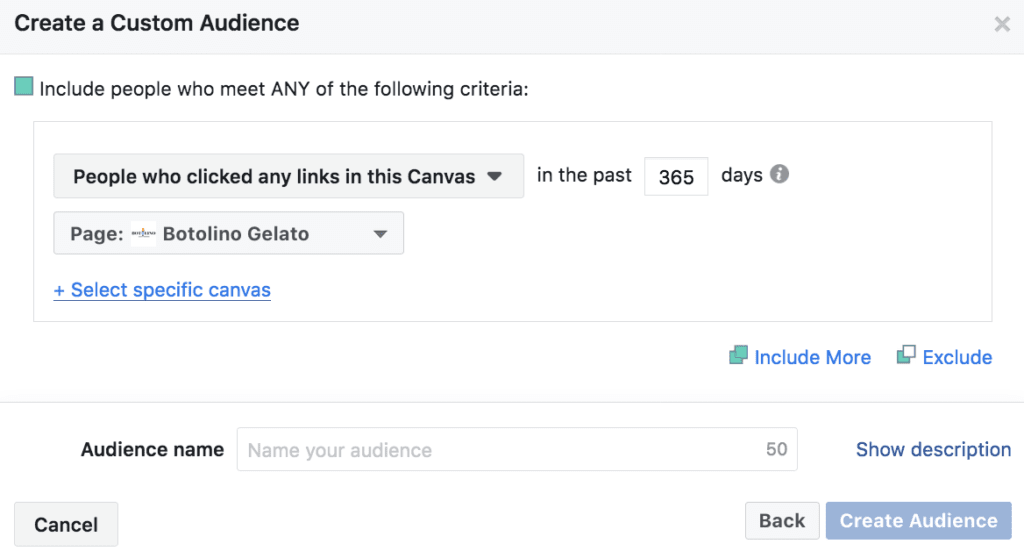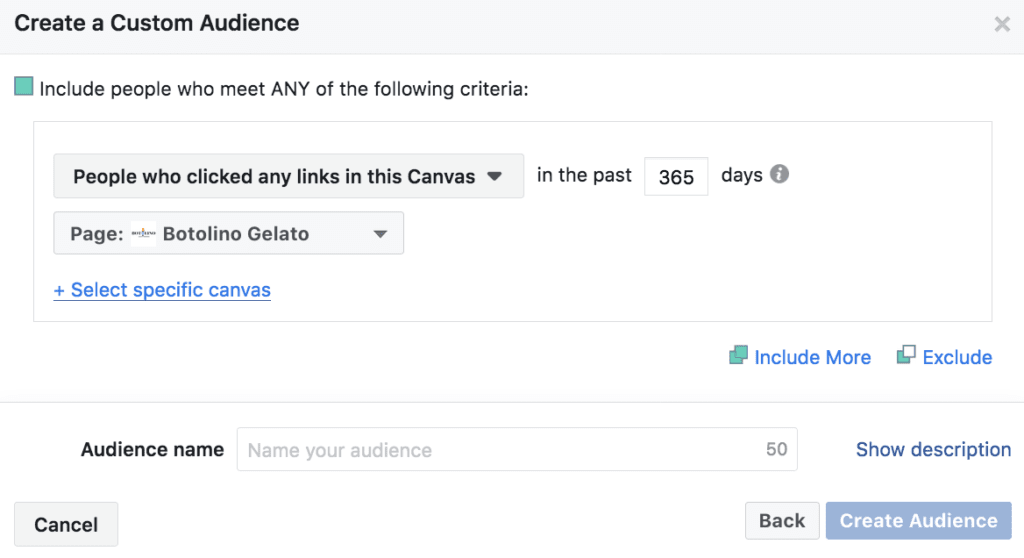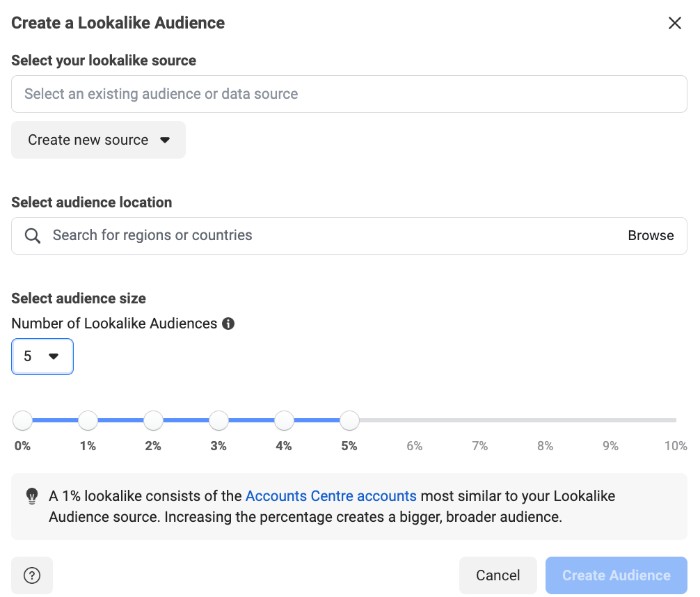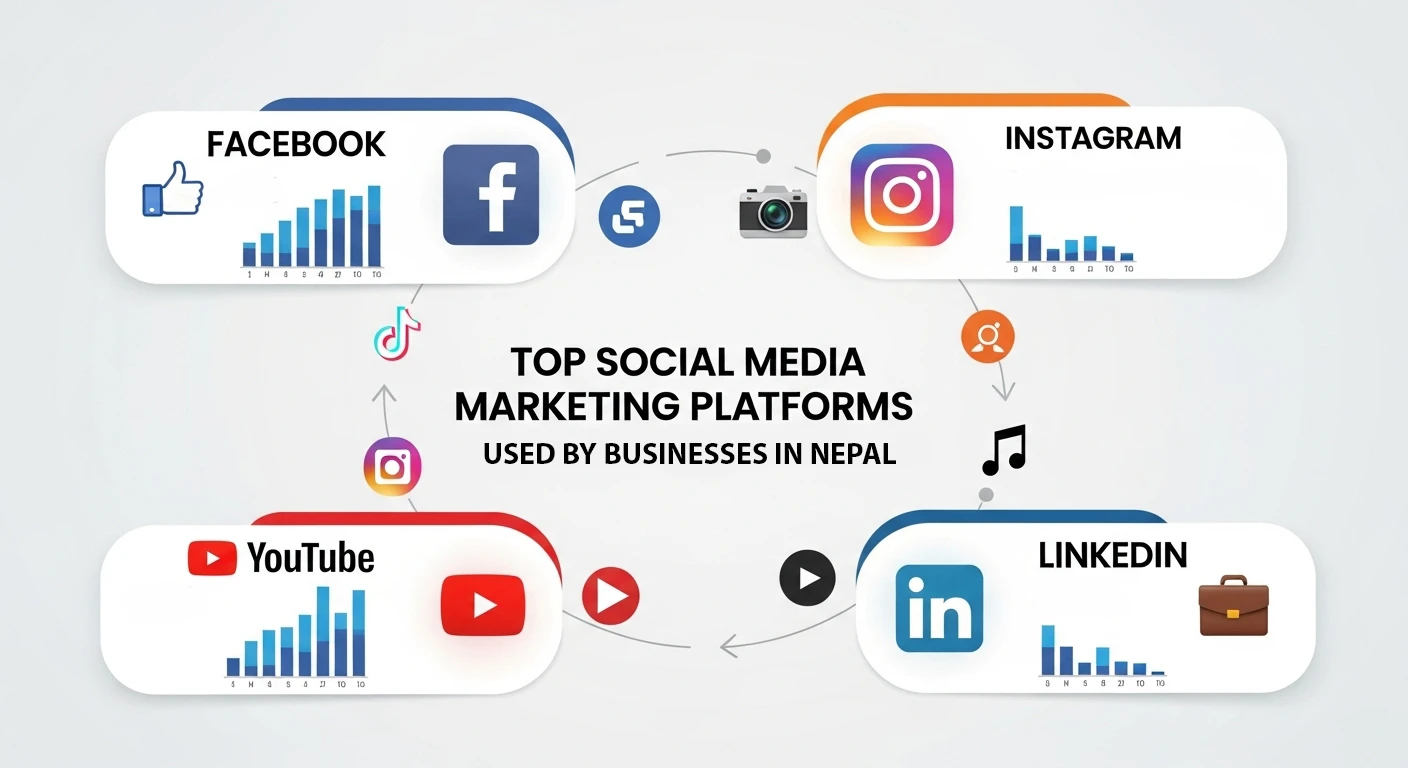In the fast-paced and digitally-driven modern business landscape, digital advertising has emerged as an indispensable tool for organizations striving to thrive and grow. The transformation of consumer behavior, with people spending more time online, has shifted the marketing paradigm. Digital advertising offers unparalleled opportunities to connect with target audiences, build brand awareness, and drive sales conversions.
This blog centers on optimizing digital advertising within the Meta Technologies ecosystem, particularly on platforms like Facebook and Instagram. It addresses five critical components of ad performance, elucidates the purpose and strategies of retargeting, and delves into how Meta’s algorithms decipher the ideal audience for ads. Furthermore, it offers e-commerce businesses seven potent strategies to harness the full potential of Meta ads.
In an era where precision, relevance, and data-driven decisions reign supreme, understanding the nuances of digital advertising within Meta Technologies can be a game-changer for businesses of all sizes. Whether you’re aiming to maximize ROI, enhance brand visibility, or expand your customer base, this blog provides actionable insights and strategies to help you leverage the vast potential of digital advertising on Meta platforms.
Meta Ad Performance-2023: Are You Wasting Your Budget?
The effectiveness of digital ads hinges on several key components that work together to capture the audience’s attention and drive desired actions. Let’s explore these five critical components and discover practical tips for optimizing them.
1. Ad Creatives and Design:
![]()
Visual Appeal: Your ad should look visually appealing. Use high-quality images or videos that resonate with your brand and message.
Consistency: Maintain consistency in branding elements, such as colors, fonts, and logos, to build brand recognition.
Call to Action (CTA): Include a clear and compelling CTA that tells users what you want them to do, such as “Shop Now” or “Learn More.”
2. Targeting and Audience Selection:

Know Your Audience: Understand your ideal customer’s demographics, interests, and behaviors to create precise targeting.
Custom Audiences: Utilize custom audiences by uploading existing customer lists or website visitors to retarget and engage with past users.
Lookalike Audiences: Leverage lookalike audiences to expand your reach by targeting users similar to your existing customers.
3. Ad Copy and Messaging:
Clarity: Keep your message concise and clear. Users should instantly grasp the benefits or solutions your product or service offers.
Benefit-Oriented: Focus on the benefits of your product or service, addressing users’ pain points or needs.
Emotional Appeal: Craft messaging that resonates emotionally with your audience, such as using storytelling or humor.
4. Landing Page Experience:
Relevance: Ensure that the landing page aligns with the ad’s message and provides what users expect.
Mobile Optimization: Make sure your landing page is mobile-friendly to accommodate users on various devices.
Loading Speed: Faster loading times improve user experience and reduce bounce rates.
5. Budget and Bidding Strategies:
![]()
Set Realistic Budgets: Allocate budgets based on your campaign objectives and expected costs per click (CPC) or conversion (CPA).
Bid Strategy: Choose the right bidding strategy, such as automatic or manual bidding, depending on your campaign goals.
Ad Scheduling: Optimize ad delivery times to reach your audience when they’re most active.
Remember, continuous monitoring and testing are essential to refine these components further. Regularly A/B tests different ad creatives, copy variations, and audience segments to identify what works best for your specific campaign. Additionally, leverage the platform’s analytics to gain insights into ad performance, allowing you to make data-driven decisions and achieve better results.
By paying close attention to these five components and implementing best practices, you can significantly enhance the performance of your digital ads, leading to increased engagement, conversions, and overall campaign success.
Retargeting in Digital Advertising:

Retargeting, also known as remarketing, is a powerful strategy in digital advertising aimed at re-engaging users who have previously interacted with your website or mobile app. It works like this: when a user visits your website or app, a small piece of code (called a pixel) is placed in their browser. This pixel tracks their online behavior, such as the pages they visited or the products they viewed.
Retargeting is a clever strategy in digital advertising, especially within Meta Technologies like Facebook and Instagram. Its main purpose is to bring back people who have visited a website or interacted with ads but didn’t make a purchase or take the desired action.
This works by tracking users’ online behavior, like clicking on an ad or visiting a website, using cookies. When these users later log into Facebook or Instagram, they may see ads related to the products or services they previously showed interest in. These ads remind them about what they looked at, encouraging them to return and complete the action, like making a purchase.
Retargeting is valuable because it targets users who have already shown some interest, increasing the chances of conversion. It keeps a brand in front of potential customers, enhancing brand awareness and encouraging repeat visits. Meta Technologies excels in this because they have vast user data and effective ad-targeting options.
Why is Retargeting Valuable?

Re-Engagement: People often don’t make a purchase or take the desired action on their first visit. Retargeting keeps your brand in front of them, reminding them of their interest.
Increased Conversions: Users who are retargeted are more likely to convert because they’re already familiar with your brand or product.
Cost-Effective: It’s often more cost-effective to retarget past visitors than acquire new ones, as retargeting campaigns have a higher ROI.
How Retargeting Works in Meta Technologies?

Retargeting in Meta Technologies, such as Facebook and Instagram, uses the rich data these platforms collect about their users. When someone visits a website or interacts with ads, a small piece of code called a pixel is placed on the site. This pixel collects data about the user’s actions and sends it back to the platform.
Later, when the user logs into Facebook or Instagram, the platform recognizes them through the pixel data and shows them relevant ads based on their previous interactions. These ads can be tailored to the specific products or services the user viewed, reminding them of what they were interested in.
The key advantage of using Meta Technologies for retargeting is the vast user base and the ability to target ads with high precision. Advertisers can narrow down their audience based on various factors like demographics, interests, and behavior. This means that the retargeting ads are shown to the most relevant people, increasing the chances of conversion.
Additionally, Meta Technologies offers dynamic ads, which automatically update with the latest products or content from the website. This ensures that users see up-to-date and personalized information, making the retargeting ads even more effective.
Retargeting with Meta Technologies (Facebook and Instagram):
Meta Technologies, including Facebook and Instagram, offer robust retargeting options:
Custom Audiences: You can create custom audiences based on website visits, specific page views, or interactions with your app. For instance, you can retarget users who viewed a product page but didn’t make a purchase.
Lookalike Audiences: Meta platforms allow you to create lookalike audiences that resemble your existing customers. This helps you expand your reach to users who share characteristics with your most valuable audience.
Dynamic Ads: These ads automatically show users the products they viewed on your website, making the ad highly relevant to their interests.
Real-World Retargeting Success Stories:
One great example of successful retargeting is from an online clothing store. When a shopper browses for a specific dress but doesn’t buy it, they might see an ad for that dress on their Facebook feed later. This gentle reminder can prompt them to return and make the purchase.
Another example is a travel website. If someone looks at flights to a particular destination but doesn’t book, they may see ads for that destination or similar deals on their Instagram. This encourages them to revisit the website and finalize their travel plans.
These examples show how retargeting in Meta Technologies helps businesses recover potentially lost sales by reminding interested users of what they are considering. It’s a powerful tool for increasing conversion rates and maximizing the impact of digital advertising campaigns.
Amazon: When you visit Amazon and view a product but don’t buy it, you’ll often see ads for that exact product following you around the internet. This is a classic example of effective retargeting.
Airbnb: Airbnb uses retargeting to remind users of properties they viewed or trips they researched. They personalize their ads with images of the specific listings users showed interest in.
Zillow: The real estate platform Zillow uses retargeting to show users properties that match their previous searches. They also send email reminders about saved listings.
In conclusion, retargeting is a valuable strategy in digital advertising that helps re-engage potential customers and drive conversions. When used on Meta Technologies like Facebook and Instagram, it can be highly effective in reminding users of their interests and encouraging them to take action. Real-world success stories demonstrate its effectiveness in keeping your brand top-of-mind and boosting conversion rates.
How does Meta Algorithm Discover Your Ideal Audience?
Meta Technologies, which encompass Facebook and Instagram, use advanced algorithms to find the perfect audience for your ads. These algorithms rely on various key factors to make this happen:
1. User Behavior:
The algorithms analyze how users behave on these platforms. What they like, share, and engage with gives insights into their interests.
2. Interests and Likes:
When users like and follow pages or content related to specific topics, it signals their interests. The algorithms take note of these preferences.
3. Demographics:
Data such as age, gender, location, and language are considered to match ads with relevant audiences.
4. Engagement:
Users who actively engage with content related to a particular topic become potential targets. For instance, someone who frequently interacts with fitness-related posts is likely interested in fitness.
The Significance of the Facebook Pixel:
The Facebook Pixel, a vital tool, contributes significantly to audience insights. Placed on your website, it tracks visitor actions, enabling Meta algorithms to refine their targeting:
1. Conversion Tracking:
The Pixel monitors actions like purchases, helping you gauge the effectiveness of your ads.
2. Custom Audiences:
It facilitates the creation of custom audiences based on user interactions, allowing you to retarget specific groups.
3. Lookalike Audiences:
By identifying common traits among your current audience, the Pixel helps in forming lookalike audiences composed of potential customers who share similar characteristics.
4. Ad Optimization:
Facebook’s algorithms utilize Pixel data to optimize ad delivery, ensuring your ads reach users most likely to take the desired action.
In summary, Meta’s algorithms, fueled by user data and behavior, partner with the Facebook Pixel to discover your perfect audience. This dynamic combination empowers precise ad targeting, making your ad campaigns more efficient and effective. It’s like having a highly skilled navigator guiding your ads to the right audience in the vast digital landscape.
How do Meta Technologies Algorithms Identify Your Ideal Audience?
In the world of digital advertising, precision is paramount. Businesses want their ads to reach the right people at the right time. That’s where Meta Technologies, which includes platforms like Facebook and Instagram, come into play. These platforms employ sophisticated algorithms to decipher user data and behavior, helping advertisers find their ideal audience. Let’s take a deep dive into how these algorithms work and the key factors they consider.
The Meta Algorithm Unveiled:

At its heart, the Meta algorithm is a data-driven detective. It sifts through vast amounts of information to uncover users who are most likely to engage with your ads. To do this, it considers a multitude of factors, creating a multifaceted profile of each user.
User Behavior: Meta algorithms closely monitor how users interact with content on their platforms. This includes the posts they like, the links they click, and the time they spend on specific pages. By analyzing these behaviors, Meta can gauge a user’s interests and preferences.
Interests and Hobbies: Likes, shares, and comments are goldmines of information. If a user frequently engages with content related to fitness, for example, the algorithm may categorize them as health-conscious individuals. This insight is invaluable for advertisers promoting fitness products or services.
Demographics: Meta’s algorithms also consider demographic data like age, gender, location, and language. For instance, if you’re marketing a skincare brand targeting women aged 25-35, the algorithm will strive to showcase your ads to users who fit this profile.
Engagement History: Users who have previously engaged with your content or visited your website are often considered ‘warm leads.’ Meta’s algorithm identifies these users and prioritizes showing them your ads. This is a form of retargeting, ensuring that your brand remains on the radar of potential customers.
Lookalike Audiences: Beyond analyzing individual user data, Meta’s algorithms are skilled at creating ‘lookalike audiences.’ These are groups of users who exhibit similar behaviors and interests to your existing customer base. It’s like finding new customers who are almost identical to your best ones.
The Role of the Facebook Pixel:
The Facebook Pixel is a crucial tool in Meta’s arsenal. This piece of code, when added to your website, tracks user interactions and provides invaluable insights. For instance, if a user visits your e-commerce store, the Pixel records their actions, like viewing products or adding items to their cart. This data helps Meta’s algorithms understand user intent and tailor ad campaigns accordingly.
Why It Matters:
Understanding how Meta Technologies’ algorithms operate is fundamental for advertisers. It enables businesses to create highly targeted ad campaigns, ensuring their message reaches users most likely to convert. This not only maximizes the efficiency of advertising spend but also enhances the user experience. When users see content that aligns with their interests, they’re more likely to engage, which benefits both businesses and the platform.
In conclusion, Meta Technologies’ algorithms are the engines that power precision advertising on Facebook and Instagram. By comprehending the factors these algorithms consider, harnessing the capabilities of the Facebook Pixel, and leveraging lookalike audiences, businesses can unlock the full potential of digital advertising on these platforms. It’s a dynamic and data-driven approach that continues to reshape the landscape of online marketing.
7 Strategies for E-commerce Success with Meta Ads
In the vast realm of digital advertising, e-commerce businesses are continually seeking ways to stand out and reach potential customers effectively. Meta Technologies, which encompasses platforms like Facebook and Instagram, offers a multitude of advertising options. Here are seven actionable strategies that e-commerce businesses can implement to make the most of Meta Ads.
1. Dynamic Product Ads: Meta allows e-commerce businesses to create dynamic product ads that automatically showcase the right products to people who have expressed interest on your website, app, or elsewhere on the Internet. These ads update in real-time to feature the products a user is most likely to be interested in, making for a highly personalized shopping experience.
2. Carousel Ads for Product Showcases: Carousel ads are a fantastic way to display a range of products in a single ad. E-commerce businesses can use them to tell a visual story about their products, highlight different features, or present a variety of options in a scrollable format.
3. Lead Generation Ads: E-commerce isn’t just about selling products; it’s also about building a customer base. Lead generation ads on Meta allow businesses to collect valuable information like email addresses from potential customers, nurturing these leads for future sales and engagement.
4. Video Ads for Product Demonstrations: Video is an engaging medium to showcase your products in action. E-commerce businesses can create video ads that highlight their products’ features, benefits, and practical applications. These videos can be used in ads across Facebook and Instagram.
5. Messenger Ads for Customer Support: Many customers prefer direct communication when shopping online. Messenger ads provide a seamless way for e-commerce businesses to offer customer support, answer product questions, and guide users through the buying process.
6. Instagram Shopping Integration: Instagram is a powerful platform for e-commerce. By integrating shopping features, businesses can tag products in their posts, making it easy for users to explore and purchase items without leaving the app. This creates a streamlined and visually appealing shopping experience.
7. Collaborative Ads with Influencers: Influencer marketing is a tried-and-true strategy in e-commerce. Businesses can collaborate with influencers who align with their brand and products to create authentic content and reach a wider audience. Influencers can introduce your products to their followers, boosting brand credibility.
Real-World Success Stories:
To illustrate the effectiveness of these strategies, let’s look at a real-world example. An online fashion retailer used dynamic product ads on Facebook to reach people who had visited their website. By showing personalized product recommendations in these ads, they achieved a 30% increase in return on ad spend (ROAS) and a 10% boost in click-through rate (CTR). This demonstrates how dynamic ads can drive engagement and conversions.
Another example involves an e-commerce brand that collaborated with a fitness influencer on Instagram. The influencer posted a series of videos demonstrating the brand’s workout gear. This campaign resulted in a 20% increase in Instagram followers and a significant uptick in product sales, showcasing the power of influencer partnerships.
In conclusion, Meta Ads offer a plethora of opportunities for e-commerce businesses to thrive. By implementing strategies like dynamic product ads, carousel ads, lead generation ads, and more, businesses can engage their target audience effectively, drive sales, and build a loyal customer base. The real-world success stories emphasize that these strategies aren’t just theoretical; they deliver tangible results in the competitive e-commerce landscape.
Tracking and Measuring Ad Performance: A Guide for Success
In the ever-evolving landscape of digital advertising, understanding and effectively tracking ad performance is paramount for businesses looking to make the most of their advertising budget. Platforms like Facebook Ads Manager offer powerful tools to monitor and evaluate campaigns. This article will delve into the importance of tracking ad performance, key performance metrics, and the significance of ongoing optimization.

Tracking ad performance is like navigating a ship; without proper instruments, you’re sailing blind. It’s not enough to launch ads and hope for the best. Here’s why tracking matters:
Data-Driven Decisions: Tracking provides insights into what’s working and what’s not. It empowers businesses to make data-driven decisions, optimizing campaigns for better results.
Budget Efficiency: Tracking helps in identifying high-performing ads and allocating more budget to them, ensuring your ad spend is used effectively.
Audience Insights: Tracking reveals who is engaging with your ads, allowing you to refine your audience targeting for better reach.
Ad Creative Refinement: Through tracking, you can see which ad creatives resonate with your audience, enabling you to fine-tune your messaging and design.
Key Performance Metrics
Understanding key metrics is crucial for assessing ad performance. Let’s explore some vital metrics:
Click-Through Rate (CTR): CTR measures the ratio of clicks to impressions. A higher CTR indicates that your ad is compelling and relevant to your audience.
Conversion Rate: Conversion rate tracks the percentage of users who take a desired action, such as making a purchase or signing up. A high conversion rate suggests that your ad is persuasive and your landing page is effective.
Return on Ad Spend (ROAS): ROAS calculates the revenue generated for every dollar spent on advertising. It’s a critical metric for assessing campaign profitability.
Cost per Click (CPC): CPC represents the cost you pay for each click on your ad. It’s essential for budget management and assessing ad efficiency.
Continuous Monitoring and Optimization
Tracking ad performance is not a one-time task but an ongoing process. Here’s why continuous monitoring and optimization are vital:
Ad Fatigue: Audiences can become tired of seeing the same ads repeatedly. Monitoring helps identify when ad fatigue sets in, prompting the need for fresh creatives.
Changing Trends: Consumer behavior and market trends evolve. Regular tracking ensures your ads stay aligned with these shifts.
Competitive Landscape: Your competitors may adjust their strategies. Monitoring enables you to respond effectively and maintain a competitive edge.
Algorithm Updates: Platforms like Facebook frequently update their algorithms. Continuous optimization ensures your ads remain compatible with these changes.
In conclusion, tracking and measuring ad performance are fundamental steps in a successful digital advertising strategy. Utilizing tools like Facebook Ads Manager, understanding key metrics like CTR, conversion rate, ROAS, and CPC, and adopting a mindset of continuous monitoring and optimization are essential for long-term success. By leveraging data insights and making informed decisions, businesses can maximize the impact of their advertising efforts in an ever-evolving digital landscape.
Best Practices for Compliant and Effective Ads
Creating ads that are not only compliant but also effective involves a delicate balance. Here are some best practices to keep in mind:
Understand Platform Policies: Familiarize yourself with Meta Technologies’ advertising policies. Regularly review them, as they may change over time. Ignorance of these policies is not an excuse for non-compliance.
Clear and Honest Messaging: Craft ad copy that is clear, concise, and honest. Avoid exaggerated claims or misleading information. Transparency builds trust with your audience.
Respect User Privacy: Be mindful of user data and privacy. Adhere to data protection regulations, and clearly communicate your data usage practices in your ads.
High-Quality Visuals: Use high-resolution images or videos that are relevant to your ad’s message. Avoid overly flashy or intrusive visuals that can disrupt the user experience.
Audience Targeting: Utilize Meta’s robust targeting options to reach the right audience. Tailor your messaging to resonate with specific segments.
Mobile Optimization: Given the prevalence of mobile users, ensure your ads are mobile-friendly and load quickly on smartphones.
A/B Testing: Experiment with different ad variations to identify what resonates best with your audience. Continuously refine your ads based on performance data.
Monitoring and Optimization: Regularly monitor ad performance and make necessary optimizations. Adjust targeting, budgets, and creatives to maximize results.
Ad Formats: Explore various ad formats, such as carousel ads, video ads, and slideshow ads, to find what works best for your campaign objectives.
Engage Responsively: Be prepared to respond to comments, messages, or reviews promptly. Engaging with your audience demonstrates your commitment to customer service.
Case Studies in Compliance and Effectiveness
To illustrate the importance of compliance and best practices, consider the following real-world examples:
Example 1: Non-Compliance Pitfall
A retailer ignored Meta’s policies on prohibited content and used misleading claims in its ad. The result? The ad was quickly disapproved, and the account faced temporary suspension. The brand lost credibility and potential customers.
Example 2: Compliance Success
A travel agency crafted an ad that adhered to Meta’s policies while highlighting its vacation packages. By using high-quality visuals, targeting the right audience, and engaging with comments promptly, the agency achieved a significant increase in bookings and positive user interactions.
In conclusion, navigating the Meta advertising landscape requires a commitment to ad compliance and the implementation of best practices. By understanding and following platform policies, crafting compelling yet honest ads, and continuously optimizing campaigns, advertisers can build trust with their audience, maximize ad effectiveness, and achieve their marketing objectives in the ever-evolving digital realm.
Key Takeaways from the Blog: Unleashing the Potential of Meta Ads
In our exploration of Meta Technologies’ advertising landscape, we’ve uncovered valuable insights that businesses can apply to supercharge their digital marketing efforts. Here are the key takeaways:
Compliance is Key: Adhering to Meta’s advertising policies is non-negotiable. It not only keeps your ads running but also fosters trust with users. Understanding and following these guidelines is the foundation of successful advertising on the platform.
Crafting Effective Ads: Crafting ads that resonate with your audience involves a blend of creativity and strategy. Keep your messaging clear, honest, and engaging. Use high-quality visuals, explore different ad formats, and optimize for mobile to capture your audience’s attention effectively.
Audience Insights through Algorithms: Meta Technologies employs sophisticated algorithms to help advertisers find their ideal audience. By considering factors like user behavior, interests, demographics, and engagement, you can fine-tune your targeting for maximum impact.
Retargeting for Conversions: Retargeting, a powerful strategy, allows you to reconnect with users who have shown interest in your products or services. It’s a second chance to convert leads into customers. Implement it wisely within the Meta ecosystem.
E-Commerce Strategies: E-commerce businesses have a wealth of opportunities on Meta. Dynamic Product Ads, Carousel Ads, and Instagram Shopping Integration are just a few of the strategies that can boost sales and brand visibility.
Tracking and Optimization: Monitoring ad performance is an ongoing process. Familiarize yourself with key metrics like CTR, Conversion Rate, ROAS, and CPC. Regularly optimize your campaigns to achieve better results.
Community and Engagement: Engage with your audience proactively. Respond to comments, messages, and reviews promptly. Building a positive online community around your brand can be a game-changer.
We invite businesses to leverage the power of Meta Technologies for their advertising needs. It’s not just about running ads; it’s about building meaningful connections with your audience. By following the best practices we’ve outlined, you can make the most of this dynamic advertising platform.
Additional Resources and References:
To further enhance your understanding and mastery of advertising on Meta Technologies, we’ve compiled a list of valuable resources and references:
Facebook Ads Help Center: Access official guides, tutorials, and policies directly from Meta Technologies to ensure compliance and success.
Facebook Business Hub: Explore a treasure trove of resources, case studies, and success stories to inspire your advertising campaigns.
Buffer’s Guide to Facebook Advertising: Buffer offers an insightful guide covering everything from ad creation to performance tracking.
Neil Patel’s Facebook Advertising Guide: Digital marketing guru Neil Patel shares his expertise in a comprehensive guide to Facebook advertising.
AdEspresso by Hootsuite: AdEspresso’s blog provides in-depth articles, webinars, and tools for mastering Facebook and Instagram advertising.
Social Media Examiner: Stay updated with the latest trends, tips, and tactics for effective social media advertising.
Facebook Pixel Implementation Guide: A step-by-step guide to setting up and using the Facebook Pixel for advanced tracking and optimization.
By exploring these resources, you’ll gain a deeper understanding of Meta Technologies’ advertising capabilities and discover innovative strategies to maximize your ad performance. Happy advertising!



